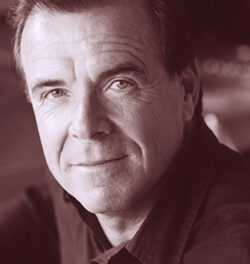Zakir Hussain and the Masters of Percussion (MOP) played a heartbeat-regulating and life-affirming concert at the Durham Performing Arts Center on March 27, as part of Duke Performances‘ stellar international programming. Hussain and the other percussionists were accompanied by an extraordinary sarangi player and a sitar player with an electrifying style, but the emphasis, naturally, was on rhythm.
Although Duke Performances has brought Zakir Hussain, generally considered the finest living tabla musician, to Durham twice previously (selling out Page Auditorium, which provoked booking the larger DPac for this concert), I had not heard him. I have heard a fair number of tabla players, but from the first moments Hussain’s hands touched the drums, I realized I had not begun to understand what a master could do. Later he sat before a six-drum set, but he began with a three-drum set, tuning them as he went and beating out such a thick tapestry of pattern over pattern that it created a kind of ecstasy in the listener. With differing motions of hands and fingers on the simple but differently pitched drums, an artist like Hussain can make a symphony of sounds.
Selvaganesh Vinyakaram opened the concert with an amazing flight of rhythms played on a big-bellied ceramic pot – later he returned with his specialty instrument, the kanjira, a simple backless frame drum about the size of a tambourine, but capable of booming sound. Next came Dilshad Khan, playing a long, exquisitely plaintive, solo on sarangi. The bowed droning of the sarangi calls up images and imaginary memories of women singing at dusk in valleys that echo their songs. Although it sounds very different from the cello, its music goes to the same emotional territory.
Hussain joined his tabla to the sarangi gently at first, as the players found their common tones and the intersections of their patterns, but soon increased the tempo to that of certain joy. After the sarangi duet, Hussain was joined by Vijay Chavan, who did mindblowing things with the dholki, his hands moving too fast to see. And so the evening went in two long sets that seemed brief: a solo, a duet, a change of players, a group, a different group, a solo … and a dancer. Kathak dancer Antonia Minnecola joined the fun, stamping out her own complementary rhythmic patterns that added the shimmer of ankle bells to the mix. With the dance, one could see clearly the great pleasure of playing – making the music, following the music, one player teasing another with little challenges, until the patterns came around to overlap and finish in a climax of sound.
The program’s second half began with Deepak Bhatt drumming down the aisle with his big doubleheaded dhol. The audience responded with whistling and clapping, and began to surge from their seats to parade along, but Bhatt reached the stage too soon. Steve Smith, the only non-Indian in the MOP, did a fancy solo with a cymbal and two drumsticks. Niladri Kumar came out with his gorgeous sitar, and zestfully merged raga and rock, with Hussain joining him on the six-drum tabla, before the entire group engaged each other in a grand finale, with each instrument distinct and all in harmony.











